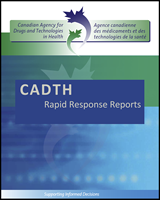Borderline personality disorder (BPD) is characterized by unstable interpersonal
relationships, emotion and self-image, as well as marked impulsivity causing
significant impairment.1
The term BPD describes a disease in the “borderline” between
psychosis and neurosis.2
In the United States, it was reported in 2008 that the estimated prevalence was 1.4
percent in general population,1 but may be as high as 20% among psychiatry
inpatients. BPD is predominantly (75%) diagnosed in women in clinical
settings.1,2 However, there is no
significant difference in the lifetime prevalence of BPD between men and women. This
discrepancy of gender prevalence suggests that women with BPD are more likely to
seek treatment than men.1 Co-morbidity with other psychiatric disorders is common in
patients with BPD, especially with mood, anxiety, substance-use, and eating
disorders. The cause of BPD is not known. Most hypotheses suggest that BPD is due to
a combination of genetic, biologic, and psychosocial factors.1 Patients may experience
spontaneous intermittent remission clinically sometimes. It is estimated that about
60% to 78% of BPD patients make suicide attempts, but the rate of
completed suicides was found to be about 4% during a 10-years follow-up. An
estimated lifetime risk of suicide of patients with BPD ranged from 3% to 10
%.2 The
clinical diagnosis of BPD is based on a comprehensive psychiatric assessment.
Clinicians use all available sources of information to make the diagnosis including
the patient’s self-reported clinical history, the clinician’s
observations during interviews, and information from family, friends, and medical
records. Children or young adolescents are generally not diagnosed with
BPD.1,3
The first-line treatment for BPD is psychotherapy.3 Pharmacotherapy is usually used as adjuncts
to psychotherapy for treatment specific BPD symptoms clinically.3 The medications used for
BPD include antipsychotics, mood stabilizer, and antidepressants.3 It has been observed that
pharmacotherapy only partially reduces symptoms, including lability, inappropriate
anger, dysphoria, impulsivity, aggression towards self and others, dissociation,
disturbed identity, paranoia and interpersonal problems.1 Little published data
indicates how long an effective medication for BPD should be continued.3 Antipsychotics have been
found to reduce BPD symptoms including aripiprazole (mean daily dose: 15 mg);
ziprasidone (mean daily dose: 20 to 80 mg), olanzapine (mean daily dose: 5 to 9 mg,
daily dose range 5 to 20 mg), haloperidol (mean daily dose 5 mg, daily dose range 4
to 16 mg), Quetiapine XL (at a daily dose of 150 mg).3
Aripiprazole is indicated for the treatment of schizophrenia and related psychotic
disorders in adults.4 In
the literature, it is indicated that, in the United States, the Food and Drug
Administration (FDA) has not approved any medications for treatment of
BPD.3
Aripiprazole is not currently approved by the FDA3 or Health Canada4 for the treatment of BPD.
The empirically use of antipsychotics in patients with BPD are considered as
off-label use.3,5 In the literature, it has
been reported that clinical trials have not been adequate to examine the efficacy of
antipsychotics in BPD.3
Results have been variable and inconclusive. This document aims to review the
clinical effectiveness and safety profile of aripiprazole in the treatment of
patients with BPD.
Disclaimer: The Rapid Response Service is an information
service for those involved in planning and providing health care in Canada. Rapid
responses are based on a limited literature search and are not comprehensive,
systematic review s. The intent is to provide a list of sources of the best evidence
on the topic that the Canadian Agency for Drugs and Technologies in Health (CADTH)
could identify using all reasonable efforts within the time allow ed. Rapid
responses should be considered along with other types of information and health care
considerations. The information included in this response is not intended to replace
professional medical advice, nor should it be construed as a recommendation for or
against the use of a particular health technology. Readers are also cautioned that a
lack of good quality evidence does not necessarily mean a lack of effectiveness
particularly in the case of new and emerging health technologies, for which little
information can be found, but which may in future prove to be effective. While CADTH
has taken care in the preparation of the report to ensure that its contents are
accurate, complete and up to date, CADTH does not make any guarantee to that effect.
CADTH is not liable for any loss or damages resulting from use of the information in
the report.

